Espresso Coffee History and Information
 |
Espresso was invented in Italy at the beginning of the 20th century by Luigi Bezzera of Milan who invented a method of making coffee with steam pressure. This method provided a quick way of making a single cup of coffee, "espressly" for one. The original Italian may have meant "pressed coffee", but the meaning also had the connotation of speed. |
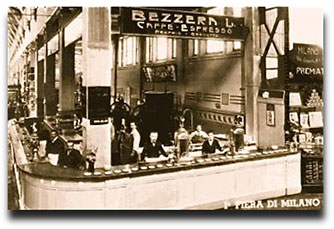 |
J. Martinez' Award-Winning Don Giovanni's Espresso Bellisimo
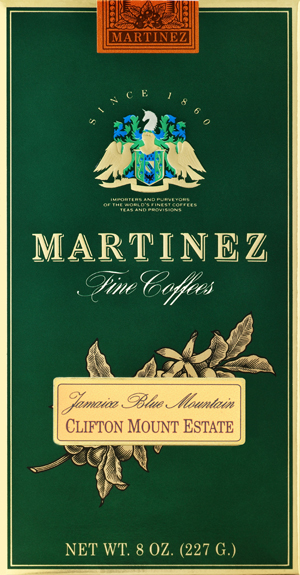 | The coffee used for espresso varies. In the south, darker roasts are used, and lighter roasts are preferred in the North. While any coffee can be made "espresso" style, as long as it it properly ground, most espresso is made from blends. J. Martinez & Company created Don Giovanni's Espresso Bellisimo in the Italian style. It is a smooth, full bodied espresso, blended from nine different select arabica coffees. Each was selected to add their particular characteristics to a blend of coffee that won the Grand Gold Medal at the 2005 Monde Selection in Brussels. While one might be tempted to believe that since the Italians invented espresso, Italian branded coffee would be the best. This is true in Italy, where the coffee is fresh roasted. And it would be true if you received your coffee shipped directly from Italy to your home. But a few weeks past the coffee's roasting date the coffee starts to become stale, even if it is vacuum-packed. Ground coffee becomes stale even faster. To experience a wonderful espresso make sure your coffee is as freshly roasted as possible. J. Martinez & Company coffees are fresh roasted within a day of shipment, ensuring that your espresso retains the same richness you would experience in Italy. |
Making Espresso
There are home espresso machines which range from simple stovetop machines which force boiling water up through the ground coffee to simple hand operated piston machines on which you can "pull" a coffee, and to "super automatic" machines that grind, dose, and brew the espresso with the press of a button. These home machines can make a pretty good cup of espresso, with some time dedicated to getting the grind and dosage correct. The same art of getting the grind and dosage correct on the more expensive professional machines is required as well.
The amount of coffee used is typically 7 grams per espresso, or per one ounce of coffee. The coffee is ground fine and tamped so that it is somewhat compacted. A super automatic will grind, dose and brew the coffee automatically, but it requires finding the proper settings to create the ideal cup of coffee. Once adjusted though, the machine is easy to use and can make an excellent espresso or cappuccino.
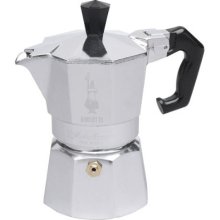
|
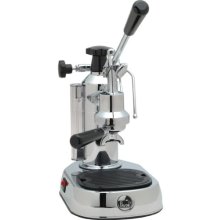
|
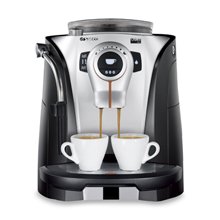
|
| Stove Top Espresso Maker | Pavoni Piston Type Espresso Maker | Saeco Super Automatic Type Espresso Maker |


